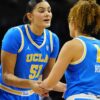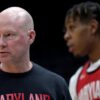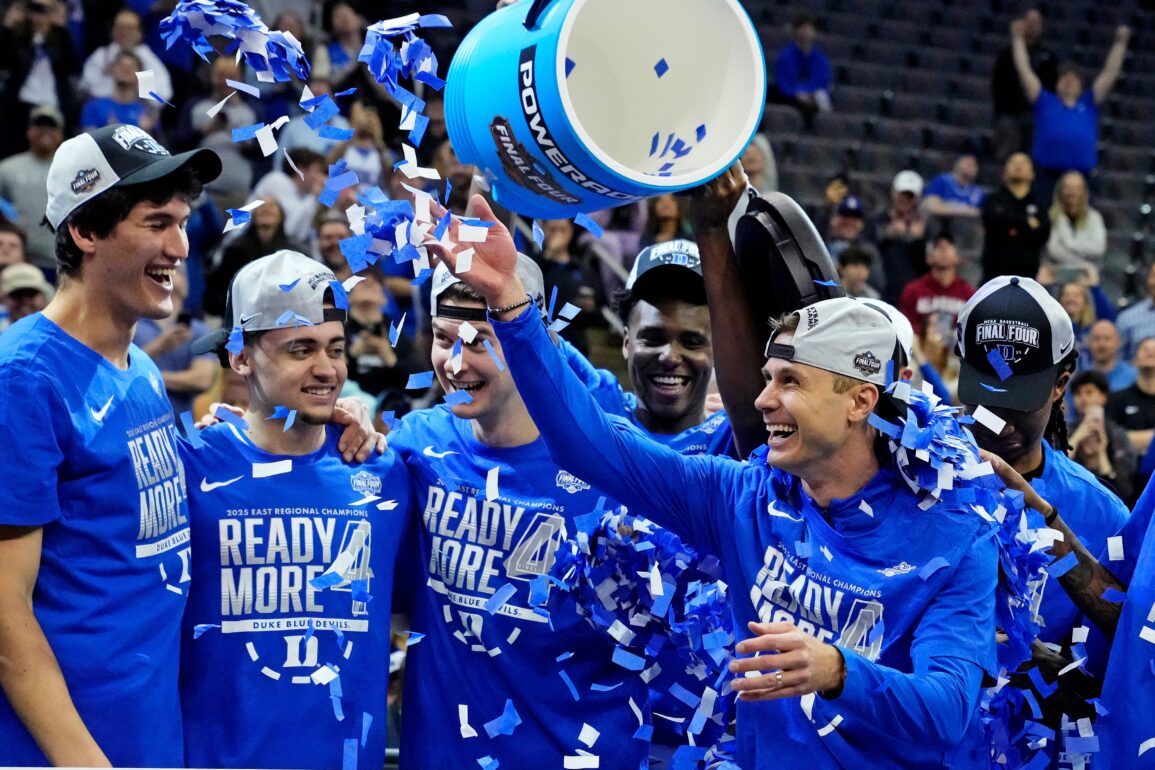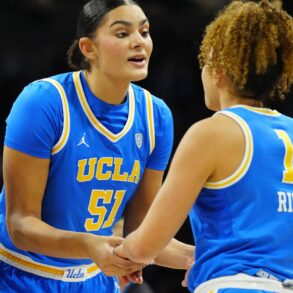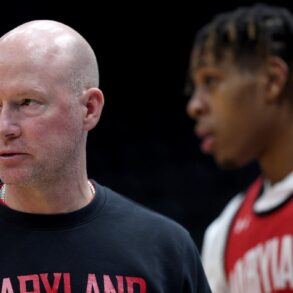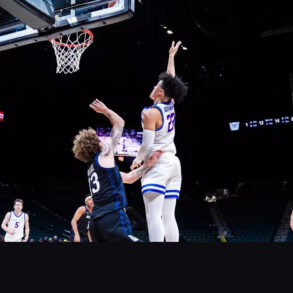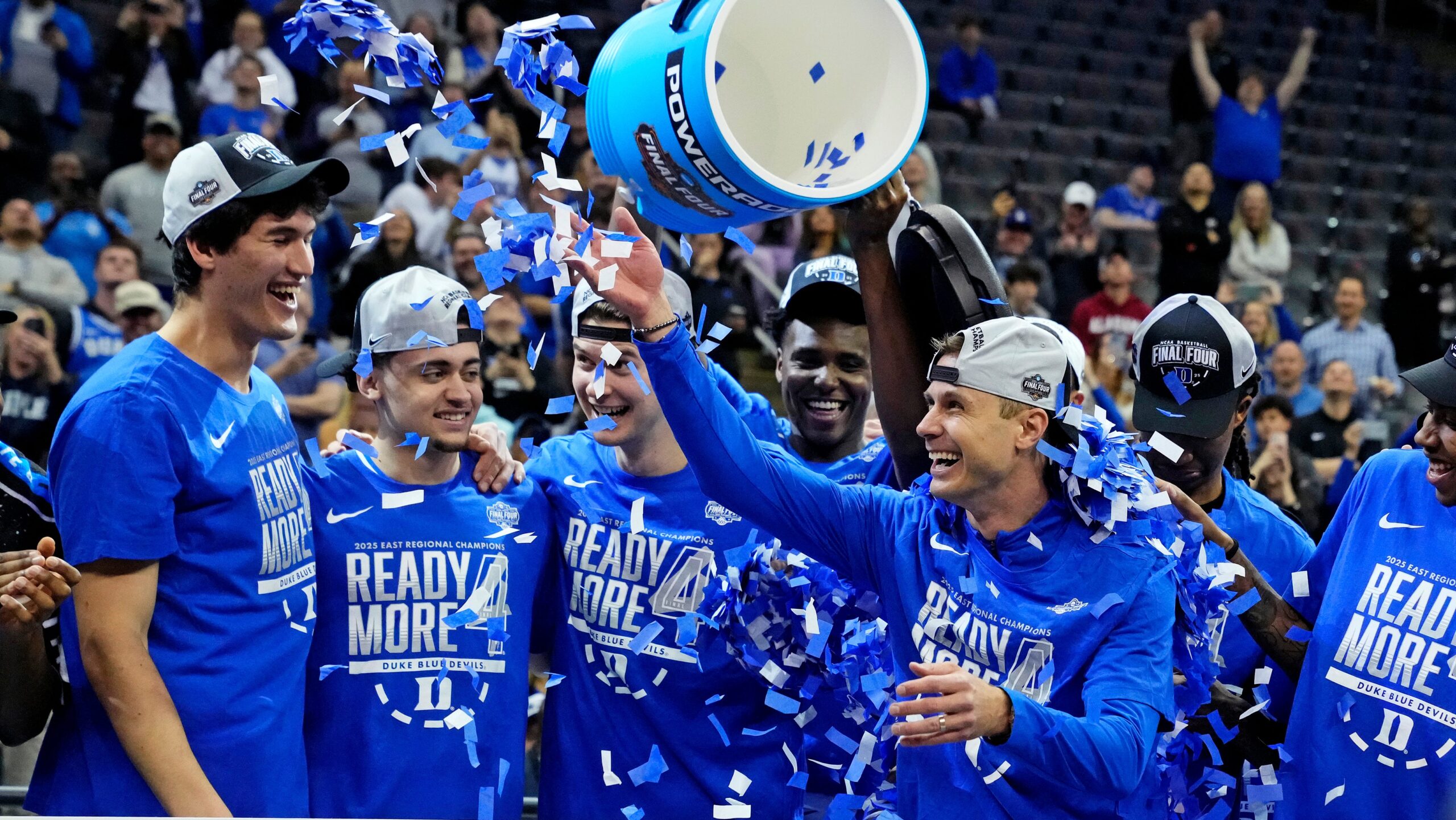
Duke, Florida, Auburn, Houston punch their ticket to the Final Four
The madness continues as Mackenzie Salmon previews the Men’s Final Four matchups, which will feature all No. 1 seeds for the first time since 2008.
Sports Seriously
SAN ANTONIO – Welcome to the Final Four, brought to you by the AARP, the Social Security Administration and Geritol. By college basketball standards, the Alamodome this weekend might as well be a nursing home. If you’re looking for a collection of players who are, shall we say, unusually mature to still be in college, you’ve come to the right place.
Meet No. 1 overall seed Auburn, a team whose starting lineup averages 23.4 years of age – the same as the Oklahoma City Thunder and older than the Portland Trail Blazers or Atlanta Hawks.
Meet Houston, a team that starts a pair of 23-year-olds who have played a combined 316 games of college basketball.
Meet Florida, a team that has gotten 56 percent of its scoring in this NCAA Tournament from just three players – all of whom are age 22 and older.
And then there’s Duke, the only team remaining with a teenager in its starting lineup. In what seems like a sacrilege in this era of college basketball, the Blue Devils start three of them.
“I think there’s a part of you that feels maybe you’re a little crazy at times, just because it’s so different,” Duke coach Jon Scheyer said.
Back in 2008, the last time there were four No. 1 seeds in the Final Four, you had Memphis, whose best player was 19-year-old Derrick Rose. You had a UCLA team led by 19-year-old Kevin Love and Russell Westbrook. North Carolina had spectacular 20-year-olds in Wayne Ellington, Danny Green and Ty Lawson supporting 22-year-old Tyler Hansbrough. And national champion Kansas was the grizzled team of the bunch, whose starting lineup averaged a ripe old 21.4 years of age.
That’s how college basketball used to be.
For better or worse, that’s not how it is anymore.
“The landscape has definitely changed,” said 23-year-old Houston guard L.J. Cryer, who started his college career with Baylor back in 2020-21. “It’s beneficial for us to stay in college as long as you can. I mean, if we had seven years (of eligibility), we would come back.”
Had he been a few years older, Cryer might not have stayed in college this long. He’s a borderline NBA prospect, probably headed for a career in Europe or hoping to get a two-way NBA contract that would shuttle him between the G League and the big club. Those types of players – and there were hundreds of them every year in college basketball – often tried to leave as early as possible, even if they were unlikely to get drafted.
But that all changed in 2021 when the NCAA rescinded its longstanding rule that prevented players from profiting off their name, image and likeness. Suddenly, players in Cryer’s situation had an economic incentive to stay as long as possible, with the opportunity to earn six or even seven figures in some cases playing college basketball.
When you combine that with all the other amenities college players get – first-class travel and accommodations, catered meals, medical care and playing games on national television – as opposed to the low-wattage lifestyle of the G League or playing in a country they’ve never heard of, it’s a pretty easy decision to stick around as long as possible.
“I mean, why not?” said Auburn’s Chad Baker-Mazara, who clocks in as the Final Four’s oldest player at age 25. “You can get paid and be able to help your family (while) getting a college degree or a college education. Why not?”
Having some older players on this stage isn’t necessarily a new phenomenon in college sports. Every now and then, the NCAA would grant a sixth year of eligibility due to injuries. BYU has been a bit of an outlier historically in both football and basketball because of how many athletes went on two-year Mormon missions and came back much more physically mature.
But what’s happening now across the country is a culmination of both the NIL era and the fact the NCAA granted any athlete whose season was impacted by COVID in either 2019-20 or 2020-21 an extra year of eligibility. With a handful of exceptions, the glut of super seniors will filter out of the system by the next academic year.
It does seem a little ridiculous that several players in this Final Four, including Duke’s Mason Gillis and Houston’s J’Wan Roberts, were part of the high school class of 2019. They entered college at the same time as players like Anthony Edwards and Tyrese Maxey, who are now five-year NBA veterans.
“I think it’s good having some guys stay,” Scheyer said. “I think there’s a limit to it, though. I think we’re getting to a place here now where four or five years is enough. But shoot, we’ve been able to take advantage of it too.
“Having Mason Gillis has been an awesome thing for us. And if they missed a year with COVID, they deserve that year back. But I do think going forward, it’s probably going to be pretty good having that age where it should be. You know, 23 years old should probably be the last year around that.”
Of course, Scheyer doesn’t have much to complain about. He chose to zig where the rest of college basketball was zagging, and it has worked out beautifully for Duke. That was possible because Cooper Flagg came to college a year early – by age, he should have been a high school senior this year – and exceeded all expectations even though he didn’t actually turn 18 until December. Shooting guard Kon Knueppel and 7-foot-2 center Khaman Maluach have also performed the way five-star prospects and possible NBA lottery picks are expected to.
“We felt like we had a special class that you can’t have every year,” Scheyer said. “And then we especially felt confident when we knew we could support them with great experience, toughness, winning players in the portal and returning with Tyrese (Proctor) and Caleb (Foster).”
But history has shown that’s not an easy needle to thread, even with incredibly talented freshmen.
Duke couldn’t quite do it in 2019 even though it had the No. 1 pick (Zion Williamson), the No. 3 pick (R.J. Barrett) and the No. 10 pick (Cam Reddish), losing in the Elite Eight to an older Michigan State team. Kentucky’s freshmen-dominated teams under John Calipari won a lot of games, but struggled at times to reach the sky-high expectations placed upon them.
In fact, in the last nine NBA drafts, just four players have gone from playing in the Final Four as freshmen to becoming top-10 picks a few months later: Stephon Castle (UConn), Paolo Banchero (Duke), Jalen Suggs (Gonzaga) and Zach Collins (Gonzaga).
Meanwhile, coaches noticed that the championships were being won by programs like Villanova, North Carolina, Virginia and Baylor who had NBA-level players that developed over multiple years. One-and-done went out of style, and the new mantra became “Get old and stay old.”
“I think you can get away with playing some freshmen as long as you have veterans around them,” Houston coach Kelvin Sampson said. “But those guys stopped being freshmen somewhere around Thanksgiving. By Christmas, hell, they might have been sophomores. Now they’re just pros.”
To win a title, though, Duke’s teenage pros will have to buck a well-established college basketball trend at the oldest Final Four of the modern era.
This post was originally published on this site be sure to check out more of their content.


